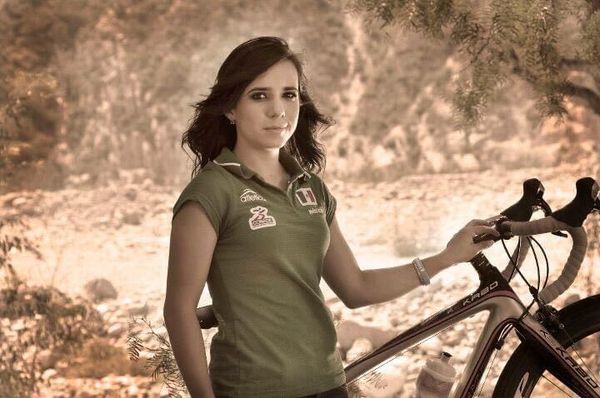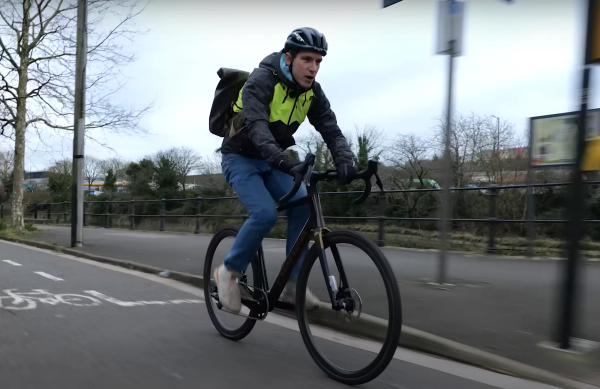5 easy tips for helping your kid learn how to ride a bike
Learning to ride a bike is a rite of passage and a skill that will last a lifetime – here's our advice for getting your kid going on two wheels
Nancy Arreola
Digital Content Manager
© Nancy Arreola
Everyone remembers the joy of learning to ride a bike
Many of us still remember the feeling of freedom and accomplishment when we hitched a ride on two wheels for the first time, but the perspective changes when the roles are reversed and it's time to teach your child to pedal.
How should you do it and when is the right time to start?
In this article we’ll guide you step-by-step through the process so that you and your little one have the best experience.
When to start learning
Before thinking about buying a bike with pedals for your child, you have to know if they’re ready or not to embark on this great adventure. There is no right or perfect age to learn to ride a bike. The moment will depend on the physical and mental development of your child, their level of comfort on the bike, their coordination and, above all, their desire to pedal.
A child’s balance develops between the ages of two and six, during a time when they’re exploring new ground and finding their adventurous spirit. As they get older, some become a little more sensitive to risks and are more cautious about trying new things, so bear that that in mind before you begin.
And before you get started, make sure your child is equipped with a well-fitting helmet! Right, with that out of the way let’s get into the top tips…
- Read more: Five basic cycling skills for beginners
Before you start
1. Bike size matters
You may be tempted to buy a bigger bike to make it last longer and save money. However, having a bike that fits your child's geometry is more important than you think and it can greatly influence their handling skills, confidence and ability to not only brake, but also get on and off the bike. Big bikes also have added weight which may not seem like much, but it is for a small child.
Once you have the right bike make sure to adjust the saddle so that they can easily reach the ground with both feet when they’re sitting; the heels should be the only part of the feet slightly above the ground. This will give your child more confidence when starting their first pedal strokes.
2. Look for the perfect spot

© Nancy Arreola
Learning how to ride a bike can feel like you're climbing a mountain at times, but the feeling once you reach the summit is well worth it.
Find a place that is open, with plenty of space and away from traffic, such as an empty tennis court or basketball court. It is best to find a smooth surface such as asphalt. Many parents think that grass is better in case of crashes, but the traction increases the difficulty of pedalling and is best avoided for small, inexperienced cyclists.
3. Say no to training wheels and get familiar with the bike
The best way to learn the concept of riding a bike and how to control it is with a balance bike. If you don't have one, you can buy a pedal bike and remove the bottom bracket so your child can learn to balance. Once they feel confident, it's time to put the pedals on and start trying.
Even when your child has mastered the balance bike, we recommend removing the pedals during their first encounter with the new bike. Let them get familiar with its size and weight, so that they have more confidence before starting.
The first pedal strokes
The transition from balance to pedalling is really easy, but before you start, it's important to show your child the connection between the cranks and the wheels so they know how pedalling moves the bike forward.
Once they understand that, show them how the brakes work. Safety first!
1. The kid is in control
The tendency is to grab your child by the saddle and handlebars while you push them on their first pedal strokes, but this interferes with their balance. With your hands on their shoulders as support and looking straight ahead, your child can practise their first pedal strokes. Let your child guide the bike and let them decide where they're going to go. It is important that your child knows that they’re in control.
In the first few metres, it is important to run alongside them to stop the bike gently or to avoid an accident if necessary. After a few tries, let your child try using the brakes on their own.

© Nancy Arreola
Once they've mastered their balance, the pedals and the brakes, it's time to let them ride
2. Ready, set, go!
The final step for your child on the path to independent cycling is learning to start on their own. This is an easy skill to learn, but getting on and off the bike is something that we sometimes overlook and is very important.
All children have a dominant leg. Do you prefer to kick a football with your left or right foot? This is the leg which should be used for the first pedal stroke. The pedal should be placed around one o'clock. Teach your child to press hard on the front pedal. This pressure will give the bike its forward momentum and you'll soon find yourself running and trying to catch up.
Alternatively, they can start off in a familiar way, as they would on a balance bike: kick off with their legs and, when they have gained enough speed, put their feet on the pedals.
Bonus Tip
Don't push it, it should be fun!
There are times when we make comparisons with other kids or we just have pretty high expectations and get frustrated when things don’t go our way. Remember that this experience is all about having fun and pressure can get in the way of the learning process.
If your child doesn't show interest, or isn't yet coordinated (for example, pedalling backwards instead of forwards), put the bike away and try again later.
So now you're equipped to give your child endless hours of fun on two wheels. Enjoy the experience and don't forget to share your best anecdotes with us in the comments section below this post.










